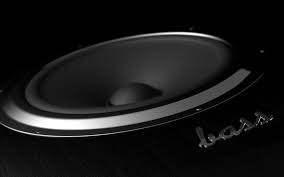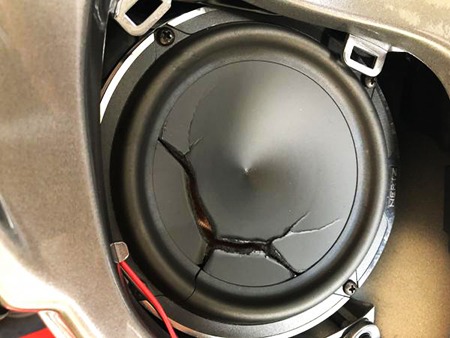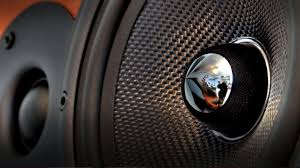Everyone wants to be able to feel that bass in their soul. Since the regular car speakers are not powerful enough to give us what we want, we install subwoofers. Subwoofers increase the bass and produce a clearer, louder sound. But the question is well established with limited answers, how long do subwoofers last?
Most audiophiles and car enthusiasts will deck their car with the best subwoofers, amplifiers and replace their car speakers. All of this helps you truly experience and feel your music, making your car ride a whole lot better.
Anyone who installs a device or is deciding to install one does their own bit of research. It is important to know the device you are buying, its features, its compatibility and its price amongst other things.
Whether it’s a phone, a tv, a laptop, an amplifier, a speaker or any other device, you will always want to know their life expectancy. The same goes for a subwoofer. The question that needs to be answered before you think of installing one is ‘how long do subwoofers last?’
The answer to your question is given below along with a few tips and tricks on how to make your subwoofers last longer.
How Long Do Subwoofers Last?
Car subwoofers have a lifespan of around 4 to 7 years. It also depends on the subwoofer you buy. Buying a low quality subwoofer will result in it getting blown or not working properly in its early years or even months.
Before buying a subwoofer, do thorough research on which ones are the best subwoofers for your car. Make sure the one that you buy is compatible with your car system, provides you with your preferred level of bass and is of high quality.
All devices have a certain amount of time that they run for, subwoofers are no exception. However, there are ways of increasing a subwoofer’s life expectancy or preventing them from getting damaged early. The easiest way to do that is to take proper care of it and maintain it.
How Do You Know Your Subwoofer Is Damaged?

Before we get into the dos and don’ts that you should keep in mind after installing your subwoofer, let us look at a few ways to know if your subwoofer is damaged.
Listen to the Audio
The simplest way to tell if your subwoofer is damaged is to listen to the quality of the sound being played. Most of the time you can tell if your music does not sound right. If all seems to look good with your playing device and the car radio, then it is most definitely your subwoofer that needs to repair or replacement.
Play any audio at the lowest volume and slowly increase the volume as well as the bass. You will know if there is something wrong with the subwoofer if you hear any kind of distortion. If there is no distortion, then your subwoofer is working perfectly fine.
Physical Check-Up
Another way to check if your subwoofer is working properly is to inspect it thoroughly. Remove the cover of the subwoofer and inspect the cone for any damage.
Play your music and listen closely if you hear any noise that sounds like scratching. If you caan, then it most likely that there is some physical damage that has been caused to your subwoofer.
You have to also inspect by making sure that the cone is moving enough and not too much or too little. Gently press down on your cone and feel how much it vibrates. If it does not vibrate or move at all, then it is definitely damaged.
Check Voltage
Use a multimeter to check the voltage, current and resistance of the subwoofer. You can do so by connecting it to the negative and positive terminals on the subwoofer. Every subwoofer has its own voltage reading.
If the reading constantly changes, it means that your subwoofer is damaged. It should stay on one reading, close to or exactly the value of the subwoofer’s original ohm reading.
Reasons Why A Subwoofer Stops Working

Power
Too much power and too less power both cause your subwoofer to stop working. If there isn’t enough power reaching the electromagnetic coil that is present in the subwoofer, then it will not be able to provide you with enough base.
If there is too much power, it will cause the subwoofer to blow. Overpowering leads to an increased amount of pressure on the subwoofer, higher than what it can handle.
Signal and Clipping
Your subwoofer can stop working if too much signal is provided to it. This occurs due to clipping. Clipping is a distortion that accelerates the degeneration of your subwoofer.
Providing the subwoofer with too much signal will cut off the feel of the bass while playing music. It reduces the lifespan of the subwoofer and in worst case scenarios, will burn them down.
Short Circuit
A short circuit in the wiring of the subwoofers means less electrical signal and current that reaches the subwoofer. When it does not have enough ‘juice’, it will not function properly and effectively.
There won’t be enough power sent to the subwoofer and it will not be able to produce enough sound or bass.
Damaged Magnet
All subwoofers have a cone attached to a permanent magnet, with a coil of wire next to it that acts like an electromagnet. It is the interaction between the two magnets that makes the subwoofer work.
If the permanent magnet is damaged, then the subwoofer will be unable to provide the necessary bass or play any sound at all.
Breakage of the Cone Seal
The cone that comes in the subwoofer vibrates with a certain frequency that allows the sound and bass would be produced. For it to move with that frequency, it needs to be enclosed in a space that allows only a certain amount of air.
All cones come enclosed in a seal. If that seal is broken, it allows for more air to be present in the enclosure. This causes the cone to move at a different frequency and collide with other parts of the system.
Ways To Increase the Lifespan of Your Subwoofer

Power
As mentioned previously, too little or too much power can damage your subwoofer. It is important to make sure that you avoid overpowering it. Your car speaker and amplifier’s rms value should match the value of the subwoofer.
Prevent Excessive Use
As any other device, the more you use your subwoofer the more damage or wear and tear it is prone to. Avoid using the subwoofer directly at the highest volume as this will damage it, reduce its lifespan and could cause the wiring to burn.
Clipping
We already spoke about clipping and the effects it has on your subwoofer. To avoid clipping, the subwoofer should be set at the right gain control setting. One such setting you should avoid using is a bass boost.
A bass boost affects the narrow band of bass frequency. If you continue using this, then ensure that the settings have changed accordingly. Another way to avoid clipping is to install and use a good amp.
Usage of a Ported Subwoofer Box
A ported subwoofer box provides your subwoofer with protection and other benefits and is thus preferred over a sealed subwoofer box. It keeps the subwoofer tightly placed inside it and enhances the bass produced.
The ported subwoofer box comes with a hole unlike the sealed subwoofer box which is airtight. This allows the hot air to escape, keeping your subwoofer cool and preventing it from overheating. It also provides a clearer, louder sound and increases the lifespan of your subwoofer.
Check the Wiring
Any sort of wiring issue can cause damage to your subwoofer. The wires should be connected at the right polarity terminals and should not be tangled. You can correct the wiring issues yourself as well!
Temperature
One aspect that is sometimes overlooked is the temperature inside and outside of the car. For example, the subwoofer being overheated or frozen can both negatively impact the lifespan of the subwoofer.
If it is too hot, it is likely that your subwoofer has heated up as well. Thus, do not immediately play your music at a high volume as it will cause heavy damage to your subwoofer.
Similarly, if it is too cold, it is highly likely that your subwoofer has become rigid, losing most of its flexibility. Do not play your music too loud immediately as the loss of flexibility in the subwoofer’s cone will cause it to tear. Play a song at a soft volume and slowly increase it to warm them up before playing your songs at your preferred volume.
Conclusion
Any device after constant use will eventually die down. However, you can prevent any early damage to your device and use it to its full potential. The same goes for any subwoofer you buy and install.
Always buy a subwoofer of good quality to prevent early damage but remember that a high quality subwoofer does not mean that it is not vulnerable to damage. No matter what kind of subwoofer you buy, you must always take good care of it.
In a sense, a subwoofer will last for as long as you allow it to. Regularly check up on it, prevent excess use and keep it away from external damaging factors. If you keep these little things in mind, you can enjoy your subwoofers for years!

